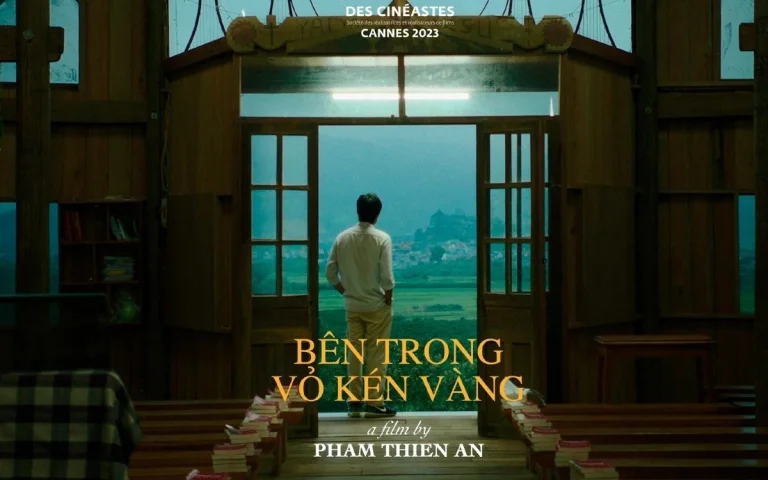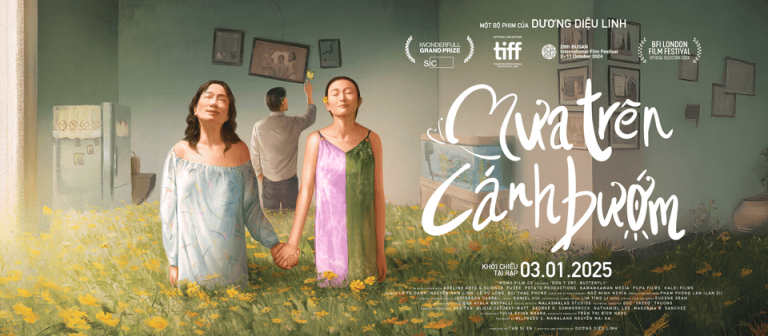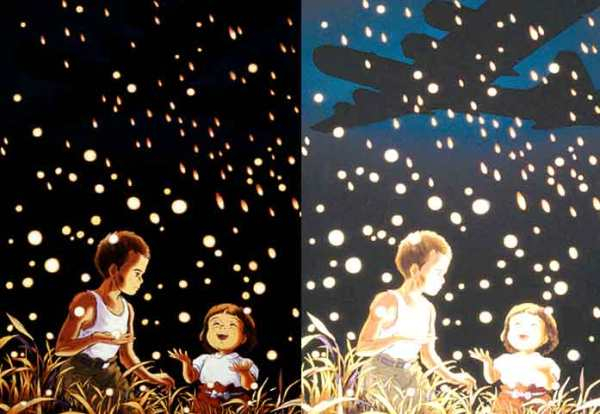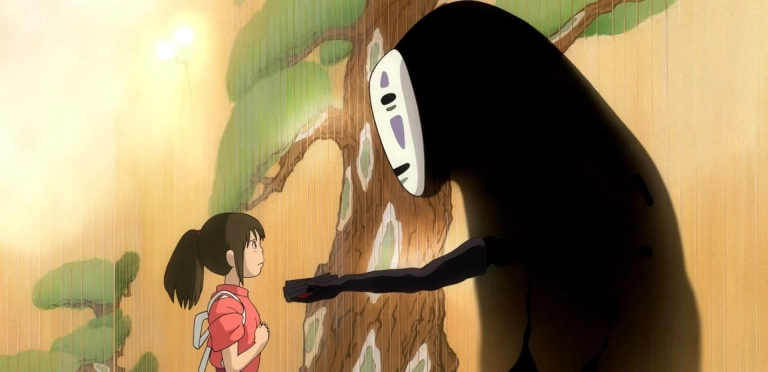Following in the footsteps of several acclaimed Vietnamese art films that have made waves at international film festivals, Inside the Yellow Cocoon Shell drew significant attention when it won the Caméra d’Or (Best First Feature) at the Cannes Film Festival. While films by Vietnamese-origin directors have previously been nominated for Oscars (The Scent of Green Papaya by Tran Anh Hung) or made it to Oscar shortlists (Children of the Mist by Ha Le Diem), an actual win at a top-tier event like the Oscars, BAFTAs, Golden Globes, or Cannes is virtually unprecedented. This makes Pham Thien An’s debut a focal point for both film professionals and movie lovers alike.
Note: Spoilers Ahead
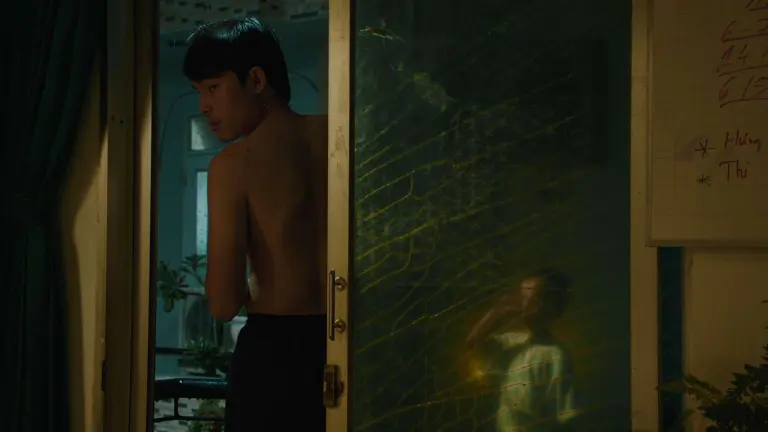
The film opens at a bustling street beer stall, evoking a connection to Pham Thien An’s earlier short film Stay Awake, Be Ready. The scene culminates in an accident, which—coincidentally or not—acts as a narrative bridge to the main plot of Inside the Yellow Cocoon Shell, where a similar accident involving the protagonist’s sister-in-law sets the story in motion.
Inside the Yellow Cocoon Shell is undoubtedly a niche arthouse film. It unfolds at an extremely slow pace, with an open-ended conclusion and a narrative deeply rooted in introspection and faith. As the director himself has noted, this is a piece of slow cinema, filled with long takes, minimal movement, and naturalistic dialogues. The languid rhythm and extended runtime will be challenging for many viewers, but that’s precisely what defines its artistry.
Personally, I enjoy slow cinema—especially when time permits, and I’m not overwhelmed by the pressures of everyday life. I’ve previously appreciated films with slow pacing and long takes like Ida (2013), Stray (2018), Burning (2018), and A Ghost Story (2017). This film offers many equally touching moments: a foggy road seen from a vehicle’s POV, mist-covered hills, or the protagonist wandering aimlessly in the rain under the night sky.
Beyond the pacing, the cinematography is stunning. The film features expressive mountain landscapes and compositions reminiscent of a hybrid between Wes Anderson’s style and Japanese cinema. The most striking technical feat is a 15-minute one-take sequence that follows a character on a motorbike, transitions into an interior conversation through a window, and continues seamlessly inside the house.
What I also appreciated were the natural, lifelike performances. Dialogues felt unscripted—characters even stumbled on their words and corrected themselves. Whether intentional or accidental, it lent a remarkable realism to the film. Inside the Yellow Cocoon Shell feels genuinely Vietnamese—it doesn’t mimic Western cinema or force cultural elements for foreign validation. It’s grounded and organic.

A Story Rooted in the Mundane
The film follows Thien, a solitary man living in Saigon. After his sister-in-law dies in an accident, leaving behind a child (her husband had left long ago), Thien takes the child back to their hometown to find someone who can care for him. From there, Thien begins a journey to search for his estranged brother. What unfolds is less a physical quest and more a metaphysical journey. Thien lives without joy, purpose, or ambition—he exists rather than lives. Through him, many viewers may see themselves: caught in the rat race, drifting aimlessly, overwhelmed by life’s burdens.
Thanks to its slow pacing and authentic dialogue, the film draws viewers away from urban chaos and into contemplative serenity. Thien’s journey into the highlands becomes a spiritual retreat, a quiet space to reflect on life and rediscover meaning.
Faith and Its Weight
One aspect I struggled with, however, was the film’s heavy religious undertone. Christian imagery—Jesus, the Virgin Mary—appears throughout the scenes and dialogue. Thien’s journey is essentially one of finding faith. Even the director himself called his Cannes victory a “blessing from above.” While this theme might resonate with Catholic viewers or those seeking spiritual guidance, it didn’t work for me as someone who identifies as a non-believer. I seek truth beyond religion, and I admit, this theme distanced me from the film’s core message.
That said, the religious symbolism may be deeply moving for those who embrace faith, making it a poignant viewing experience. The film’s climax, in which Thien dreams of finding his brother’s family only to awaken alone and lost again, seems to suggest the illusions along the journey of faith. But even when illusions shatter, it doesn’t negate divine existence. Don’t give up—this seems to be the director’s message. It’s powerful, but not one I personally connect with. Still, I respect each individual’s belief system.
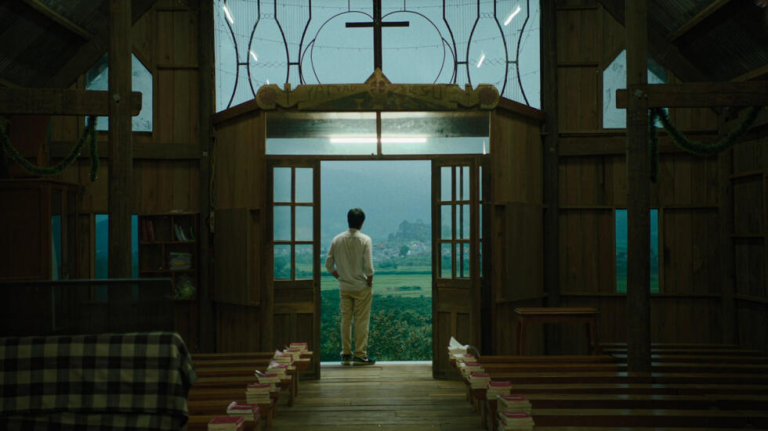
Life’s Fragility and the Cocoon Metaphor
Beyond faith and existential aimlessness, the film also addresses life’s fragility—the idea that we may be here today and gone tomorrow. On this theme, however, I found Glorious Ashes explored it more effectively.
The title Inside the Yellow Cocoon Shell initially puzzled me. It’s poetic, luminous, and elusive. In one scene, Thien carries a baby wrapped in a yellow blanket—perhaps the metaphorical “yellow cocoon.” The baby, pure and unaware of the pain awaiting it in the world, represents new life entering a harsh, chaotic existence. The cocoon is faith—a warm, protective shell nurturing the child until it grows, guiding it when it faces life’s inevitable disorientation. I believe this is what the director intended to convey.
Final Thoughts
To conclude, Inside the Yellow Cocoon Shell is a thoughtful, well-crafted piece of cinematic art. It boasts stunning visuals, emotional resonance, and meaningful symbolism. The script is layered and deeply reflective. However, the film’s strong religious message was a personal barrier for me. I believe Pham Thien An won at Cannes due to his talent and vision—not divine intervention. That said, the film’s artistic merit is undeniable.
So, what about you? Do you have faith? And did this film speak to you? Share your thoughts!

